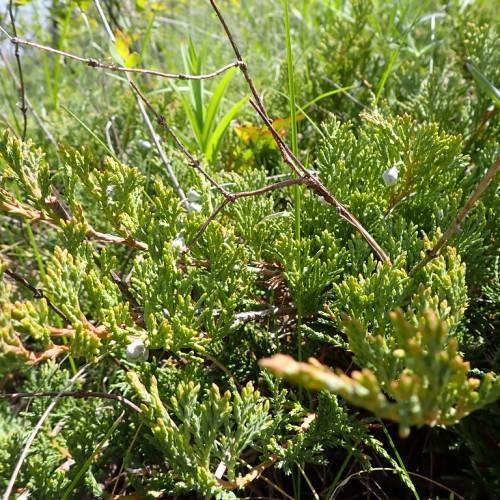
creeping juniper
Juniperus horizontalis 'Limeglow'
Cycle:
Perennial
Watering:
Minimum
Hardiness Zone:
2
Flowers:
Flowers
Sun:
Full sun
Soil:
Sandy Loamy Clay Rocky
Fruits:
Fruits Ready In
Leaf:
Yes
Growth Rate:
Low
Maintenance:
Low
Drought Tolerant:
Yes
Salt Tolerant:
Yes
watering
Creeping juniper requires minimal watering, and it can even tolerate periods of drought. For established plants, it is best to water deeply once every week or 2 during the growing season (spring to fall). During this time, wait until the soil starts to feel slightly dry before watering, and aim to provide enough water to moisten the soil to a depth of 6 to 8 inches. During periods of extreme heat or prolonged drought, additional watering may be necessary. During winter months, reduce the frequency of watering considerably, as this plant does not require much water to survive when dormant. Avoid overwatering, as this can harm the plant.
sunlight
Creeping Juniper (Juniperus horizontalis 'Limeglow') requires full sun, which means about 6 to 8 hours per day. The best times for this type of plant to get optimum sun exposure is during the morning or late afternoon, avoiding the harsh mid-day sun. If possible, try to find a spot that will remain partially shaded during the hottest part of the day, such as near the side of a structure.
pruning
Creeping juniper (Juniperus horizontalis 'Limeglow') should be pruned during the early spring once the plant has finished blooming. Pruning should be minimal, limiting cuts to the old, diseased, or crossed stems. If necessary, lightly trim back young upright stems by about 25-30%. This will encourage a denser and bushier form which will produce more vibrant foliage and flowers. When dormant, creeping juniper should also be lightly sheared (1–2 inches up from the soil), to maintain an even and attractive form. In general, tipping of the foliage to maintain a desired shape is not necessary as it can weaken the plant over time.
